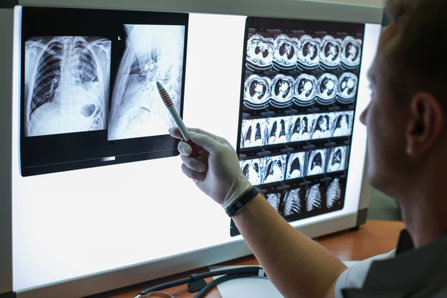Alcohol and Cancer—Death Rates Now Measured on a State Level

While it’s been known for some time that alcohol can increase cancer risk, a new study was one of the first of its kind that examined, on a state level, just what percentage of cancer deaths were connected to alcohol.
The findings put forth a good idea of the depth of the problem regarding just how many cancer deaths are connected to alcohol. In every region of the United States, it is now clear that alcohol consumption is a risk factor for both contracting different types of cancer and also for dying from those types of cancer.
The Direct Link Between Alcohol Consumption and Cancer
The National Institute on Alcohol Abuse and Alcoholism has published a large body of information on how alcohol consumption harms different areas of the body. In those publications, the NIAAA also discusses the different types of cancer that alcohol consumption increases an individual’s risk of contracting. Some such cancers include:
- Head and Neck Cancer. People who consume 50 or more grams of alcohol per day (about 3.5 drinks per day) have a two to three times greater chance of contracting certain types of head and neck cancer than individuals who do not drink. People who drink alcohol are at a particularly higher risk for contracting cancers of the oral cavity (excluding the lips), pharynx (throat), and larynx (voice box).
- Esophageal Cancer. According to the NIAAA, alcohol consumption is a major risk factor for esophageal cancer, mainly Esophageal Squamous Cell Carcinoma.
- Liver Cancer. Alcohol consumption takes its toll on the liver, in many ways because the liver is responsible for processing alcohol. Too much alcohol consumption leads to a build-up of fats in the liver, leading to alcoholic fatty liver disease. Alcohol consumption can also lead to the destruction of liver cells, resulting in scarring of the liver (cirrhosis). Finally, alcohol consumption increases liver cancer risk factors (Hepatocellular Carcinoma).
- Breast Cancer. More than 100 epidemiological studies have found an association between alcohol consumption and increased risk for breast cancer in women. Quoting NIAAA researchers, “A meta-analysis of 53 of these studies (which included a total of 58,000 women with breast cancer) showed that women who drank more than 45 grams of alcohol per day (approximately three drinks) had 1.5 times the risk of developing breast cancer as nondrinkers (a modestly increased risk).”
- Colorectal Cancer. People who drink approximately 3.5 drinks per day are more than 1.5 times more likely to contract colorectal cancer than nondrinkers. For every 10 grams of alcohol consumed per day, there is a 7 percent increase in colorectal cancer risk.
While alcohol consumption is by no means a guarantee that one will contract cancer, there does seem to be a scientific consensus that there is a connection between alcohol consumption and cancer. And while it is true that the more one drinks, the greater the risk; any form of alcohol consumption increases the risk for cancer.
The safest way to avoid alcohol-related cancer altogether would be to not consume alcohol.
On a State Level
A study published in the journal Cancer Epidemiology found that, while the U.S. proportion of cancer attributable to alcohol does vary by state, alcohol-related cancer has been found in all 50 States and the District of Columbia.
On the low end of the spectrum is Utah, where alcohol consumption is responsible for about 2.9% of cancer incidences. On the high end of the spectrum is Delaware, where alcohol consumption is responsible for about 6.7% of cancer incidences.

For alcohol-related cancer deaths, the trend is similar. Utah has the lowest rate of alcohol-related cancer deaths, at 1.9% of all cancer fatalities. Delaware and Nevada have the highest rates of alcohol-related cancer deaths, at 4.5% of all cancer fatalities. As for the national average, the study determined that “Alcohol consumption accounted for 4.8% of cancer cases and 3.2% of cancer deaths, or about 75,200 cancer cases and 18,950 cancer deaths annually, during 2013 to 2016.”
The study, which sought to measure the state-by-state involvement of alcohol in all cancer incidences and cancer deaths, concluded that alcohol is a precipitating factor for cancer in all states.
Quoting Farhad Islami, MD, Ph.D., researcher at the American Cancer Society and one of the study authors, “This information is important for prioritizing state-level cancer prevention and control efforts to reduce alcohol consumption and the burden of alcohol-related cancers. Healthcare providers and public health practitioners can educate the community to expand the currently limited awareness of the cancer-related risks of alcohol consumption.”
Treating Alcohol Misuse
The people who are most at risk of experiencing alcohol-related cancer are people who drink to excess and who meet alcohol addiction criteria. To protect such individuals from alcohol-related cancer and the many other risks and dangers of alcohol consumption, it is crucial to get them help with a residential drug and alcohol addiction treatment center.
Drug and alcohol rehab programs help recovering addicts address the underlying issues and struggles that caused them to turn to alcohol in the first place. Furthermore, such programs help educate recovering addicts in the tools, strategies, life skills, and know-how that they need to confront life without turning to alcohol as a coping mechanism when various life challenges arise.
If someone you care about is drinking too much and cannot stop drinking, please contact Narconon as soon as possible. Do not wait until it is too late for your loved one. Contact Narconon today.
Sources:
- https://www.niaaa.nih.gov/alcohols-effects-health/alcohols-effects-body
- https://doi.org/10.1016/j.canep.2021.101893
- https://www.eurekalert.org/pub_releases/2021-01/acs-rsa011921.php


 ®
®